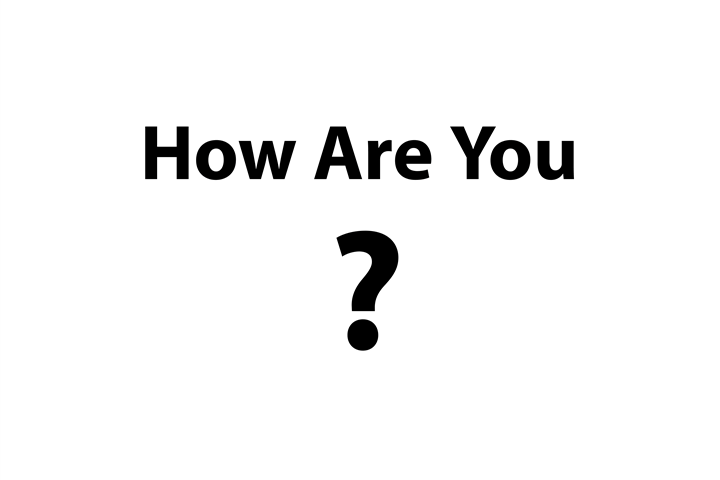Mastering the simple question, “how are you in arabic,” is the first key step toward genuine conversation. Because Arabic is a gendered and dialect-rich language, the correct phrase changes depending on who you are speaking to and where they are from. This guide provides all the necessary Ways to Say “How Are You?” in Arabic in both Modern Standard Arabic (MSA) and common regional dialects, along with essential response phrases.
Formal/Standard Arabic: How to Ask How Are You in Arabic
The most recognized way to ask how are you in arabic is in Modern Standard Arabic (MSA). This is the safest choice for formal situations, writing, and when you are unsure of the person’s native dialect.
MSA Conjugation (Formal/Standard Arabic)
| Addressed To | Arabic Phrase | Transliteration | Meaning |
|---|---|---|---|
| Male (Singular) | كَيْفَ حَالُكَ؟ | Kayfa ḥāluka? | How is your condition? |
| Female (Singular) | كَيْفَ حَالُكِ؟ | Kayfa ḥāluki? | How is your condition? |
| Dual (Two people) | كَيْفَ حَالُكُما؟ | Kayfa ḥālukumā? | How is your condition? (Dual) |
| Group/Plural (Male/Mixed) | كَيْفَ حَالُكُمْ؟ | Kayfa ḥālukum? | How is your condition? (Plural) |
| General (Any context) | كَيْفَ الحَال؟ | Kayfa al-ḥāl? | How is everything? |
How to Say How Are You in Arabic Dialects
In everyday conversation, Arabs rarely use the formal Kayfa ḥāluka. Instead, they rely on highly simplified dialectal forms. Knowing these is essential for sounding natural in the how are you in arabic language.
Egyptian Arabic (Masri)
| Addressed To | Arabic Phrase | Transliteration | Context/Response |
|---|---|---|---|
| Male (Singular) | إِزَّيَّك؟ | Izzayyak? | The go-to casual phrase. |
| Female (Singular) | إِزَّيِّك؟ | Izzayyik? | Note the -īk ending. |
| Casual Alternative | عَامِل إِيه؟ | ‘Āmil īh? | What are you doing? (m.) / What’s up? |
| Response | كُلُّه تَمَام | Kulluh tamām | Everything is great (casual and positive). |
Casual Gulf Dialect (Khaleeji)
The Gulf dialect, used in the UAE, Saudi Arabia, Kuwait, etc., often uses unique idioms.
| Addressed To | Arabic Phrase | Transliteration | Context/Response |
|---|---|---|---|
| Male (Singular) | شْلُونَك؟ | Shlōnak? | What’s your color? (Idiomatically: How are you?) |
| Female (Singular) | شْلُونِك؟ | Shlōnich? | |
| Response | زَيْن الْحَال | Zayn al-ḥāl | Good condition (Common Khaleeji response). |
| Alternative | شْخْبَارَك؟ | Shakhbārak? | What’s your news? |
Levantine Arabic (Shami)
Used in Lebanon, Syria, Jordan, and Palestine.
| Addressed To | |||
|---|---|---|---|
| Male (Singular) | كِيفَك؟ | Kīfak? | The primary form. |
| Female (Singular) | كِيفِك؟ | Kīfik? | |
| Response | مْنِيح / مْنِيحَة | Mnīḥ / Mnīḥa | Good (m. / f.). |
| Alternative | مَاشِي الْحَال | Māshi al-ḥāl | Things are okay / Life is moving. |
How to Respond to How Are You in Arabic
Responses often reflect humility and gratitude to God, regardless of the person’s actual mood. Always follow a question about well-being with a question asking the same of the speaker.
Standard Responses (Universal)
| Arabic Response | Transliteration | English Meaning |
|---|---|---|
| الحَمْدُ لِلَّهِ | Al-ḥamdu lillāh | Praise be to God (The most common, polite reply). |
| أَنَا بِخَيْر، شُكْرًا | Ana bi-khayr, shukran | I am fine, thank you. |
| شُكْرًا عَلَى سُؤَالِك | Shukran ‘alaa su’aalik | Thank you for asking. |
Phrases for Showing Deep Concern
If you notice someone is unwell or sad, these phrases show genuine care:
- How is your health now? (m.) – كَيْفَ صِحَّتُكَ الْآن؟ (Kayfa ṣiḥḥatuka al-’ān?)
- Is everything alright? – هَلْ كُلُّ شَيْءٍ عَلَى مَا يُرَام؟ (Hal kullu shay’in ‘alā mā yurām?)
- Wishing you safety/get well soon (m. / f.). – سَلَامْتَك / سَلَامْتِك (Salāmtak / Salāmtik)
Continuing the Conversation
After answering, it is essential to return the question:
- To a Male: And you? – وَأَنْتَ؟ (Wa anta?)
- To a Female: And you? – وَأَنْتِ؟ (Wa anti?)
- To a Group: And you? – وَأَنْتُمْ؟ (Wa antum?)
Conclusion
Mastering the simple act of asking how are you in arabic and knowing the proper response is the true gateway to social fluency. Ultimately, the gender and dialectal differences you’ve learned here demonstrate your respect and understanding of the how are you in arabic language and culture. To accelerate your progress and practice these essential conversational phrases, consider using Kaleela App. Keep practicing, and you’ll connect with Arabic speakers instantly!



